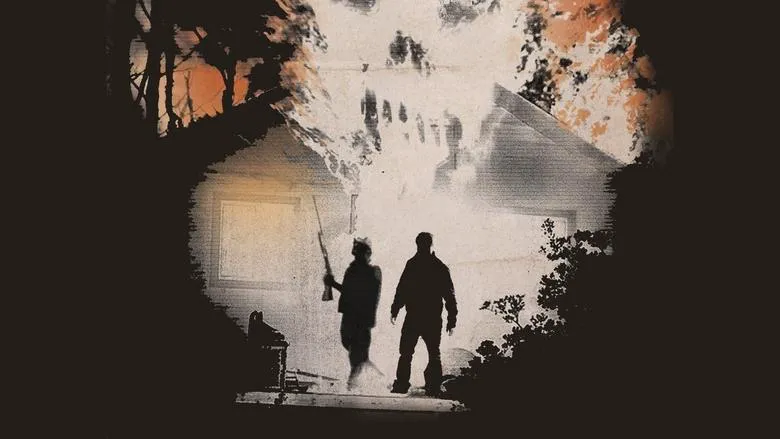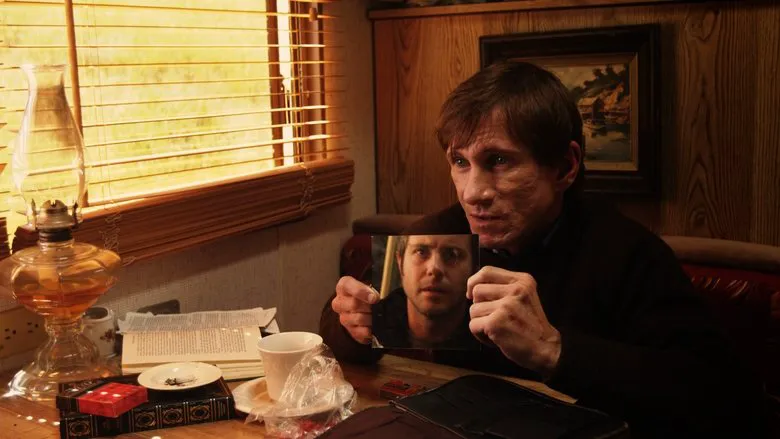Navigating the Labyrinth of the Psyche: A Character Analysis of “The Resolution”
“The Resolution” plunges audiences into a dark, psychological abyss, primarily through the tormented journeys of its two central figures: Mike and Kyle. Far from being simplistic hero-villain archetypes, these characters embody complex facets of addiction, misguided intervention, and the arduous path to self-discovery. Their intricately woven fates are the fabric of this chilling thriller, making their individual struggles and shared trauma the beating heart of the narrative.
Mike: The Unwilling Prisoner on a Path to Self-Reclamation
Mike enters the horrifying setup of “The Resolution” as a man utterly broken by addiction. Described as a “junkie struggling with addiction,” his initial appearance is one of vulnerability and disorientation, battered and bruised, thrust into an isolated cabin he never chose to inhabit. He embodies the raw, unpolished reality of someone teetering on the brink, subjected to Kyle’s harsh and coercive “intervention.”
Initially, Mike is a reactive character, his responses driven by disorientation and resistance. He questions his reality, his perception blurred by the isolation and Kyle’s escalating manipulations. The line between paranoia and truth becomes increasingly muddled for him, forcing viewers to share in his disquieting uncertainty. However, it is through this very crucible of psychological torture that Mike undergoes a profound transformation.

Mike's initial torment and disorientation.
As Kyle’s sinister intentions become clearer, Mike’s passive victimhood solidifies into iron-willed resolve. He refuses to break, choosing instead to “turn the tables on Kyle.” This shift marks his true emergence, moving from a man defined by his addiction to one determined to reclaim his agency. His daring escape from the cabin symbolizes not just a physical breaking free, but a metaphorical triumph over the psychological chains that bound him. Mike’s journey post-escape is only the beginning, hinting at the long, arduous road to true healing, underscoring that genuine recovery stems from self-reflection and empathy, rather than forced isolation. He becomes a symbol of tenacity and the enduring human spirit’s capacity to rise above immense suffering.
Kyle: The Architect of Anguish and a Prisoner of His Own Demons
Kyle, seemingly the instigator and puppet master of “The Resolution’s” nightmarish scenario, is introduced as a man driven by a volatile mix of “guilt, anger, and possibly a hint of redemption.” His initial intent to “snap his friend out of his self-destructive cycle” is clouded by the misguided belief that sheer willpower and coercion can cure addiction. This paternalistic, yet ultimately destructive, approach sets the stage for the film’s tense drama.
His behavior throughout the film becomes increasingly erratic and disturbing. He manipulates Mike, enforces an arduous regimen, and subjects him to solitary confinement, all while his own “ulterior motive” remains shrouded in mystery. Kyle appears to be a figure consumed by a distorted sense of duty, blurring the lines between aid and torment.

Kyle, outwardly composed but inwardly tormented.
The shocking revelation about Kyle’s own “severe addiction to his own demons” and a “traumatic experience” completely recontextualizes his character. His actions, initially perceived as monstrous, are unveiled as a desperate, self-loathing manifestation of his own trapped psyche. Mike’s captivity was not just an attempt to “fix” a friend, but a mirroring of Kyle’s internal struggle, a cry for help veiled in control and sadism. This twist elevates Kyle from a simple antagonist to a tragic figure, trapped in his own cycle of pain, illustrating how unresolved trauma can externalize itself in destructive ways, affecting not only the sufferer but those around them.
A Dysfunctional Dance: The Interplay of Two Broken Souls
The dynamic between Mike and Kyle is the core of “The Resolution,” transforming what could be a straightforward thriller into a profound exploration of addiction’s many faces. Their relationship initially presents as rescuer and rescued, but quickly devolves into captor and captive, reflecting the toxic nature of misguided intervention and the power imbalances inherent in dependency.

The isolated cabin, an arena for unfolding psychological drama.
The cabin, initially presented as a sanctuary or even a clinical environment for “sobriety,” rapidly morphs into a psychological battleground and a “trap.” This physical setting mirrors the mental landscapes of both characters: Mike, trapped by his addiction and Kyle’s schemes; Kyle, trapped by his past and inner demons. The film cleverly uses their direct and indirect interactions to peel back layers of denial, deceit, and self-deception, ultimately revealing that both men were, in different ways, enslaved by their struggles. Their complex “resolution” lies not in fixing each other, but in Mike’s eventual breaking free, a beacon for his own healing and a haunting reflection of Kyle’s continuing internal battle.
In conclusion, Mike and Kyle are more than just characters in a thriller; they are deeply flawed human beings grappling with the suffocating weight of addiction and trauma. Their journey in “The Resolution” serves as a stark reminder that the path to wellness often requires confronting not just external forces, but the hidden demons within ourselves, echoing the film’s haunting final note that true recovery is an arduous, uncharted journey towards redemption.